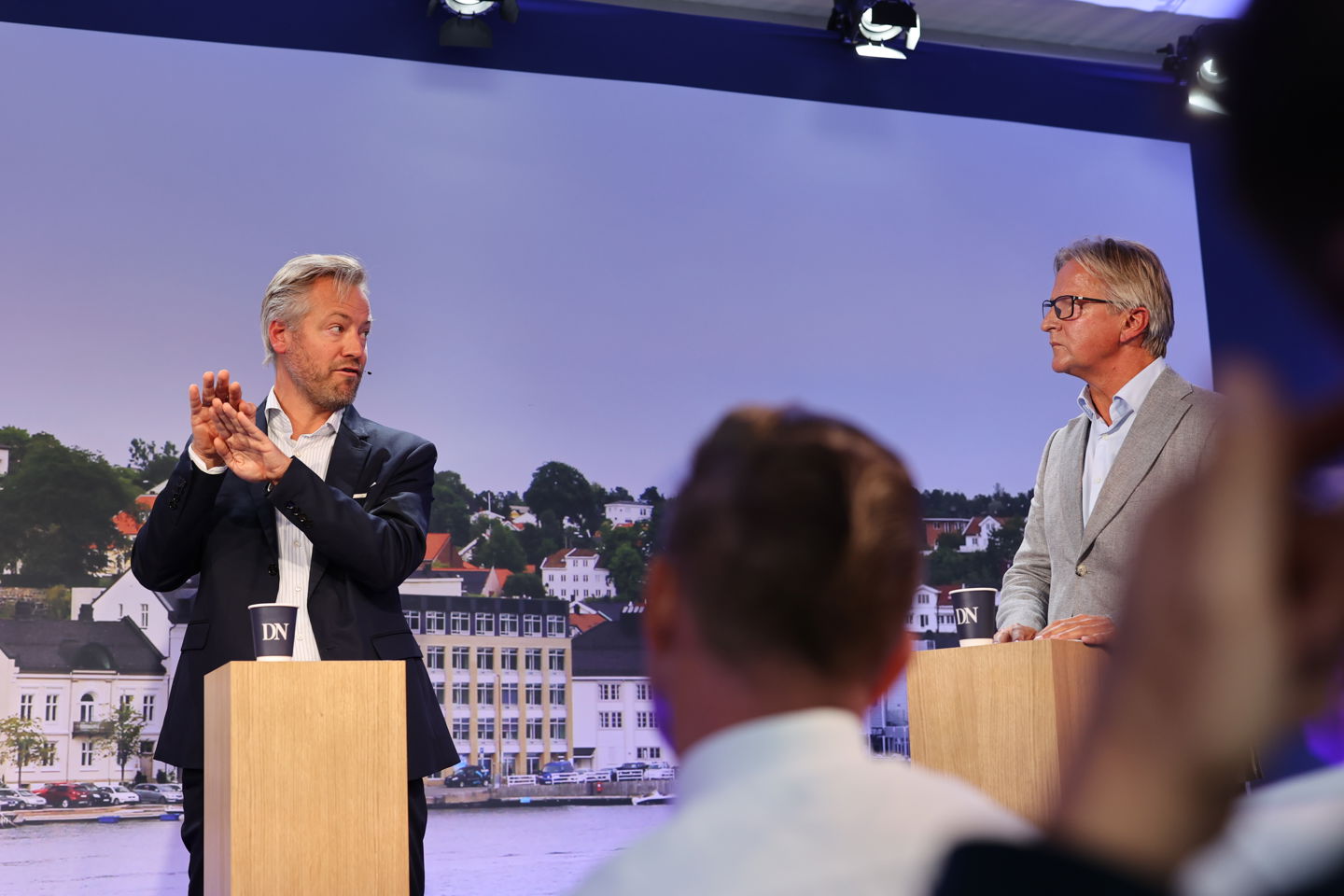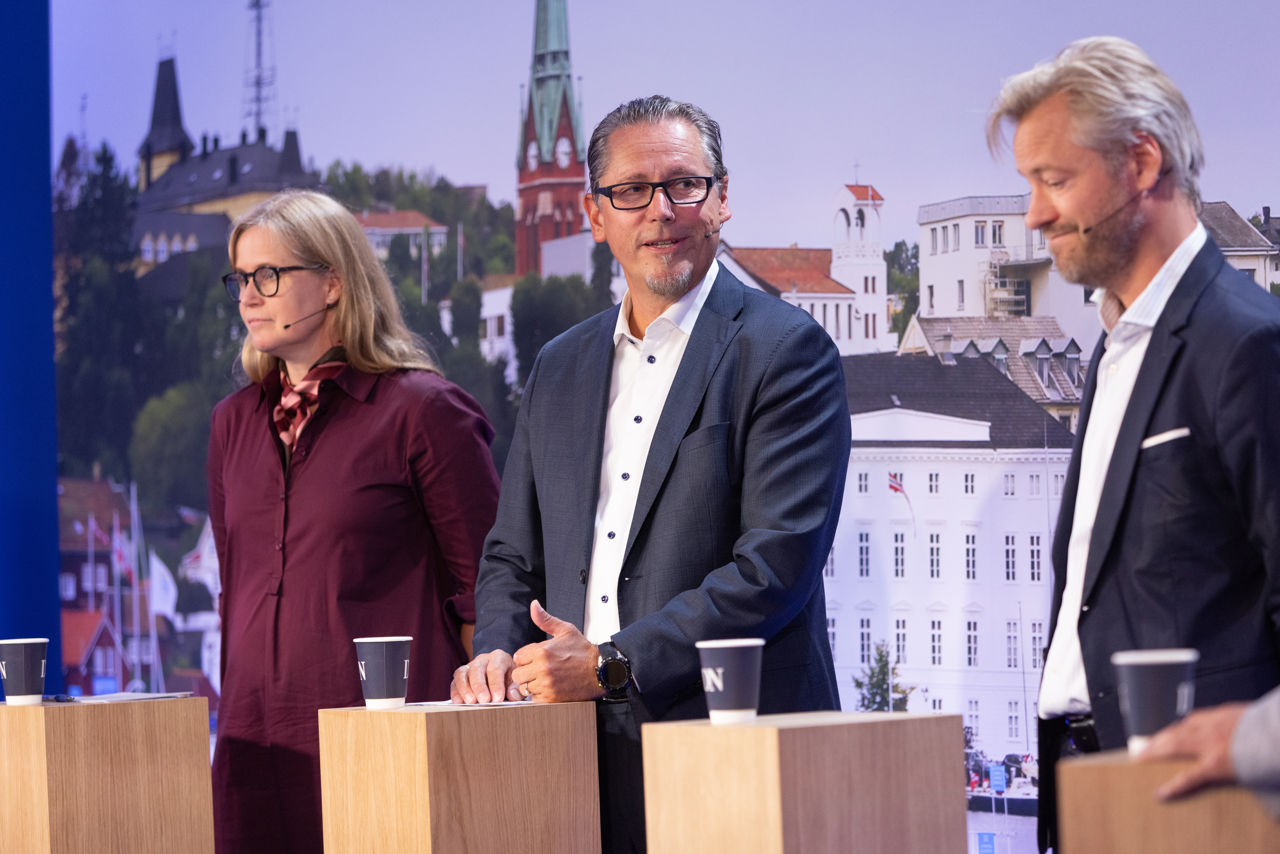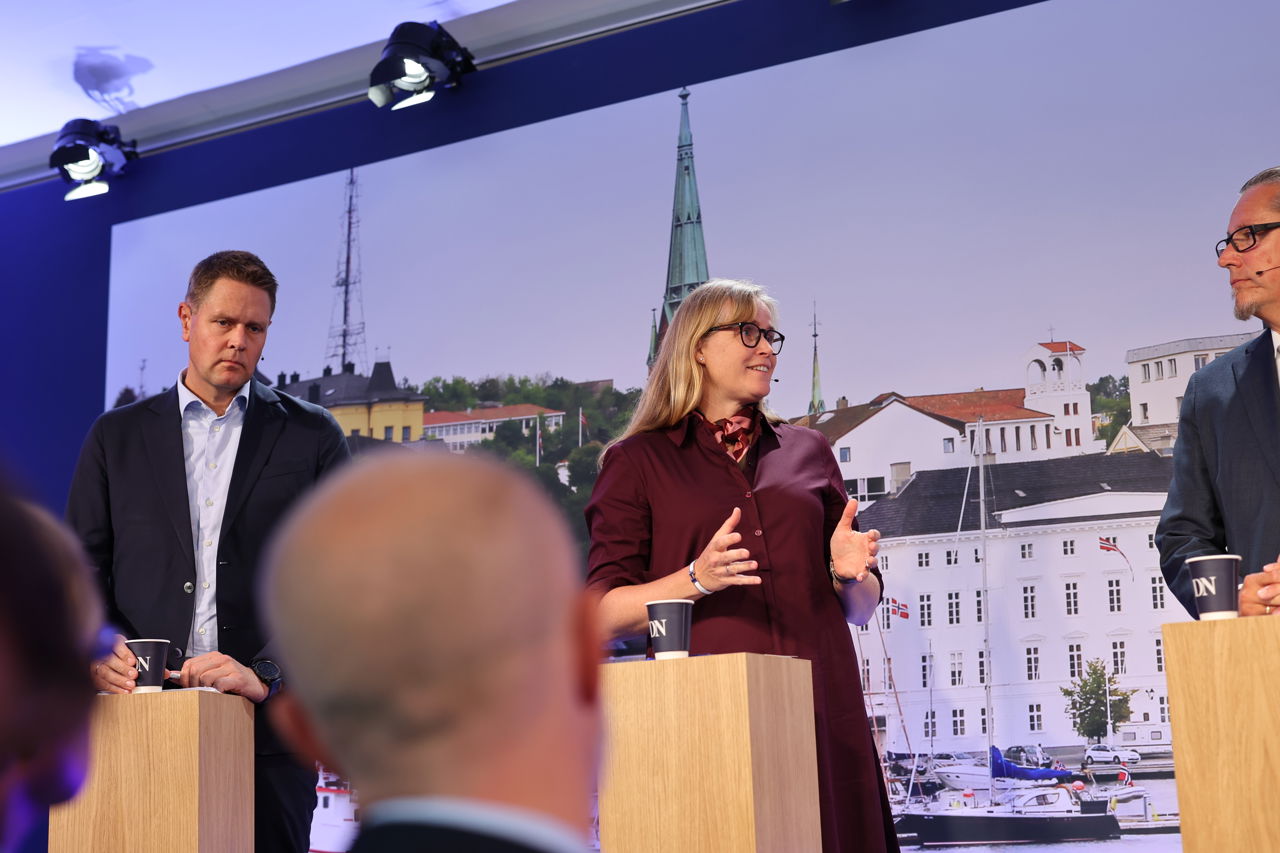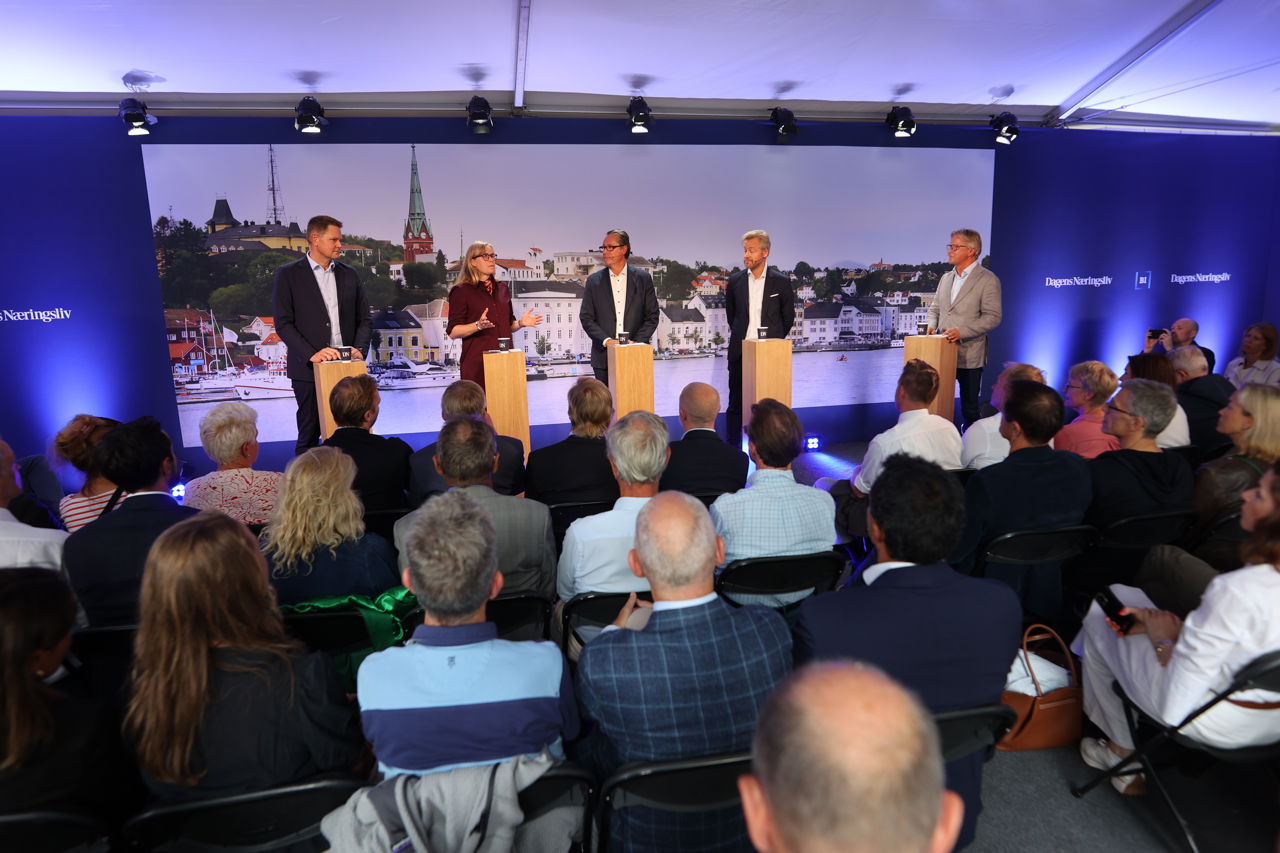
Has the green transition hit a red light?
This summer, a panel of experts debated whether the energy transition has lost its momentum. We’ve captured the key arguments for and against that motion in this article.
Has the green transition hit a red light?: Short answer: no. Long(er) answer: no, but…
By the usually sleepy seaside town of Arenal in southern Norway, a panel of energy and industry profiles debated the good health (or lack thereof) of the energy transition this summer. Representing industry, energy analysts, assurance and risk management, and the renewable industry, the panel’s discussion touched on less mature tech, record low costs of solar and batteries, the urgency of the climate crisis, industrial competitiveness, and the increasingly contentious question of interconnectors. Keep reading as we summarise the panellists’ arguments.

Has the green transition hit a red light?
This summer, a panel of experts debated whether the energy transition has lost its momentum. We’ve captured the key arguments for and against that motion in this article.

THE ENERGY ANALYST
(Erik Reiso, Senior Partner & Head of EMEA, Rystad Energy)
For Reiso, there’s no blinking red light for the transition, but it does depend on where you are and which technologies you’re assessing. Europe, China, and Africa, Reiso noted, are seeing significant progress, but the energy system, policy and pricing in Europe alone, for example, is deeply fragmented which is frustrating a full transition.
Reiso cites Europe, too, as a region where solar and batteries are falling significantly in cost, making them increasingly attractive in the market. The EU’s speed of deployment, he also notes, is progressing, with installation tripling from 50 to 150 GW per year.
In addition, Reiso takes on the increasingly contentious question of interconnectors. His argument is that, for Norway, these interconnectors (along with building out what is ‘sensible’), can be part of the solution to the country’s power demands. One strategy – in his perspective – would be to import already-subsidised power from the EU.

Erik Reiso, Senior Partner & Head of EMEA, Rystad Energy
THE ENERGY ANALYST (Erik Reiso, Senior Partner & Head of EMEA, Rystad Energy)
For Reiso, there’s no blinking red light for the transition, but it does depend on where you are and which technologies you’re assessing. Europe, China, and Africa, Reiso noted, are seeing significant progress, but the energy system, policy and pricing in Europe alone, for example, is deeply fragmented which is frustrating a full transition.
Reiso cites Europe, too, as a region where solar and batteries are falling significantly in cost, making them increasingly attractive in the market. The EU’s speed of deployment, he also notes, is progressing, with installation tripling from 50 to 150 GW per year.
In addition, Reiso takes on the increasingly contentious question of interconnectors. His argument is that, for Norway, these interconnectors (along with building out what is ‘sensible’), can be part of the solution to the country’s power demands. One strategy – in his perspective – would be to import already-subsidised power from the EU.

Remi Eriksen, CEO of DNV
THE RISK ASSURANCE CEO (Remi Eriksen, CEO of DNV)
Eriksen points to DNV’s own analysis that shows the transition is continuing, while it’s clear some technologies are experiencing a challenging period. He focuses in particular on Norway where the transition has slowed down. This, he argues, is despite capital and mature, proven technologies being available. Eriksen also refers to the country’s progress on climate goals, noting that to date Norway has achieved 12.5% in emission cuts while it’s goal by 2030 is 50% (he expects Norway to reach approximately half of this target).
Beyond Norway, Eriksen cites Germany (the country’s coalition government has established a debt-financed special fund worth 500 billion euros for infrastructure and climate projects) and China (“They’re developing the technology and cutting emissions”) as examples of meaningful commitment to the transition.

THE RENEWABLE ENERGY CEO (Birgitte Vartdal, CEO of Statkraft)
Statkraft’s analysis is consistent with both Rystad Energy and DNV, Vartdal says, who contextualises her input with the backdrop of deadly record summer temperatures being experienced in the European continent. Established technologies are dropping significantly in cost (she notes the fact that in June of this year solar was the largest energy source in Europe) and increasing their share of the market while in certain cases outperforming fossil alternatives such as gas and coal.
Vartdal notes that less mature technologies such as hydrogen and floating offshore wind are experiencing challenges in developing large enough scale. This, she shares, is some of the context behind the company’s decision to sharpen their strategy in prioritising the most mature technologies. She explains that this approach will enable the company to build scale and greater profitability within mature technologies.
On the question of Norway’s power surplus, Vartdal believes prices in the Nordics to remain somewhat lower than European prices over time. However, she picks up on Reiso’s point re the use of interconnectors, argues that this disparity could be eroded as the EU continues to build out new renewable power as it is doing today.

THE INDUSTRY VOICE
Harald Solberg, Managing Director of the Federation of Norwegian Industries
Solberg begins by looking at the positives, in Norway’s case it’s unique hydropower resources: “We have fantastic starting point in Norway, an industry that is largely built on green energy.” Industry in Norway, he says, is committed to decarbonising and cannot do that without more renewable energy. If there’s a red light blinking for Solberg it’s that the build-out of more energy and the network is going too slowly and lacks proper forward planning.
He is also clear that Norway’s competitive advantage is intimately tied to the country’s power surplus and comparatively low power prices. He does see this threatened by high prices in some of the country’s bidding zones, as well as an increasing demand for more power that will need to be met.
In his final verdict, he points to a lack of ability to plan ahead in Norway when it comes to building out power and network based on the future needs of the country.
THE VERDICT
Generally, the panel agrees there is no obvious red light for the energy transition preferring to see an green/orange scenario. Yet while certain regions and technologies (solar, batteries) find increasing market success, difficulties remain in achieving the necessary pace and scale in a period of climate crisis, and pressurised competitiveness. The difficulties faced by less mature technologies are genuine and to a degree expected, but do not define a context where established technologies are breaking records. The panel considers the picture to look a little different in Norway, where they believe the transition has hit an orange/red light. Industry’s commitment to decarbonising continues, yet competitively priced energy, especially in a Norwegian context, will be absolutely critical to their potential to compete with global players.
